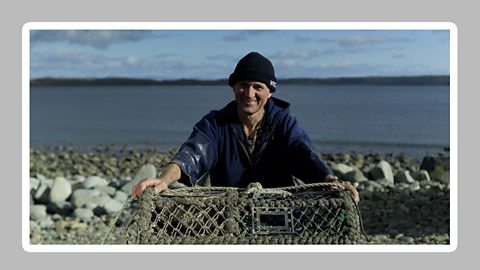
Introduction
The seas around Wales are home to all sorts of predators. Predators are animals that eat other animals in order to survive. Creatures like blue sharks and Atlantic grey seals all visit this area to hunt for prey.
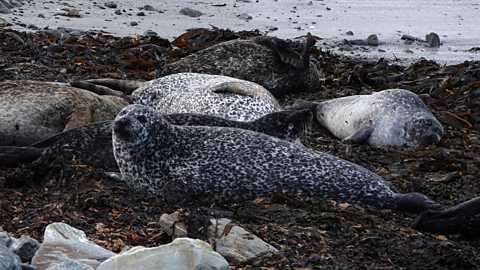
Atlantic grey seals can be spotted off the Pembrokeshire coast. Although they spend most of their time out at sea feeding on fish, they can often be seen resting on the beach.
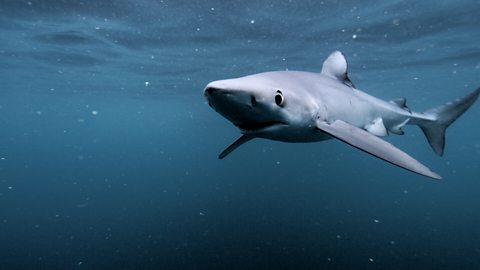
Blue sharks visit UK seas in the summer months. They have long pectoral fins, a feature which makes it quite easy to tell the difference between them and other sharks. They mainly feed on small fish and squid.
What is a predator?
- Predators are found at the top of a food chain.
- A predator is an animal that eats other animals.
- The animals that predators eat are called prey.
Predators come here looking for prey. But some of these creatures, or prey, are one step ahead as they have the ability to hide themselves. We call this camouflage.
What is camouflage?
- All sorts of animals use camouflage to hide from predators.
- This means that they have changed, or adapted, to look exactly like their surroundings or to blend in with it.
- Camouflage makes animals very difficult to spot.
- Animals that are not well camouflaged are more likely to be eaten as prey.
The prey
Atlantic bobtail squid
The Atlantic bobtail squid is a type of cuttlefish. Bobtails are tiny, no bigger than a golf ball. But this tiny bobtail has a superpower, it can change colour.
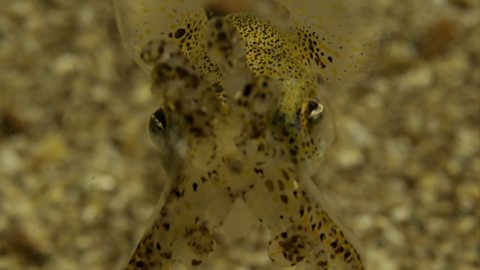
To hide from predators the bobtail changes colour to blend in with the yellow sand.
But this is not the bobtail’s only trick. When the bobtail swims through red seaweed, or kelp, it changes colour again.
The bobtail’s skin is packed full of chemicals that can change colour instantly.
Curled octopus
These incredible creatures have three hearts and blue blood. They use their eight tentacles to taste everything that they pass. But this octopus also has a superpower, it can change its colour and shape.
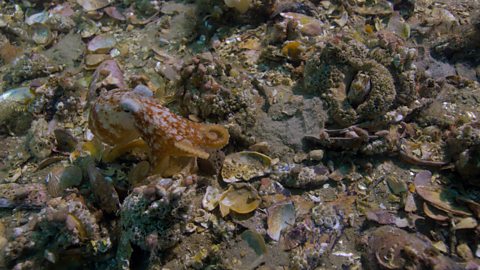
When a predator approaches, it changes its colour and its shape to blend in with its surroundings.
Scorpion spider crab
The scorpion spider crab is covered in sharp spikes. These spikes enable the crabs to create their very own camouflage. As they wander around, they pick up pieces of seaweed, eventually forming a very effective camouflage.
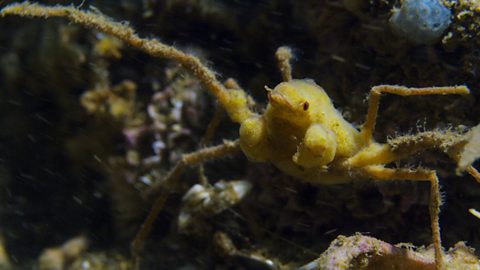
This scorpion spider crab has stuck bits of living things such as sea sponges to its spikes. These sea sponges grow to cover the crab so that it blends in perfectly with its environment.
Video: Predators and prey
Find out how animals in the depths of the ocean camouflage themselves from their predators in their fight for survival.
Quiz: How can some ocean animals avoid predators?
Activity
Can you camouflage your own creature?
Choose a surface such as a tree, fence, wall, or hedge. Can you design a creature that will be camouflaged against this background?
Draw a picture of your creature and decorate it. Use paint, crayons, or pencils to create suitable colours and patterns. You could also use natural materials to decorate your animal. Attach your design to the surface and then check to see if you can spot it from a distance.
Was your creature successfully camouflaged? How could you improve your design? Good luck.

Where next?
What is migration and why do some animals migrate?
Find out how far some animals travel when they migrate every year.
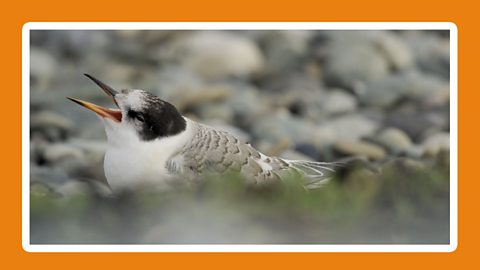
What is the most intelligent animal in our oceans?
Did you know that dolphins are one of the cleverest animals on Earth?
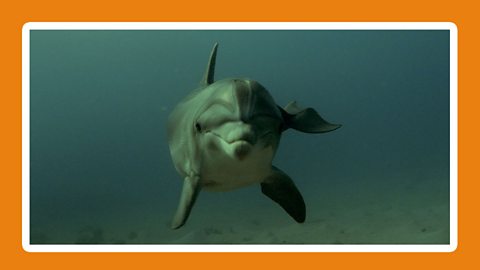
KS2 Sustainability
A collection of lessons for pupils aged 7 to 11

More on Food
Find out more by working through a topic
- count1 of 2
